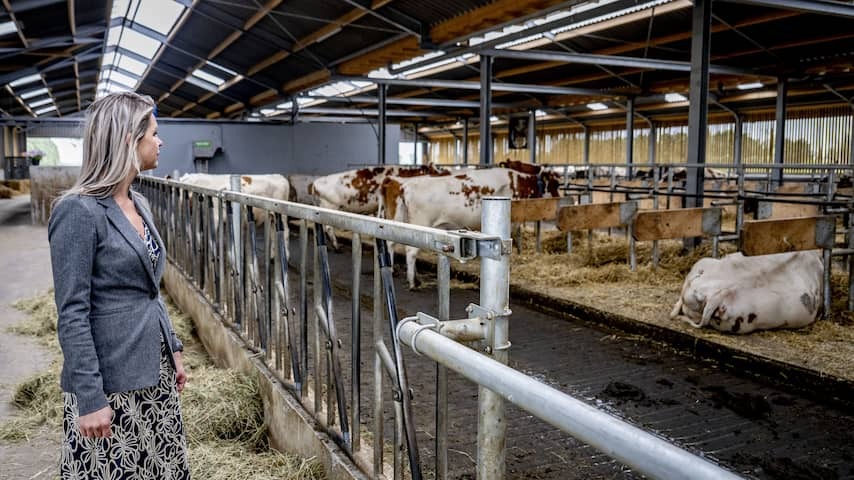
The Plan of Outgoing Minister Femke Wiersma to Amend The Nitrogen Law is Receiving A Lot Of Criticism. Nature and Farmers’ Organizations Have Major Doubts As To Whether the New Law Will Help Get Permit Granting Off The Ground. They advise against introducing the law in this way.
Wiersma Announced Her Plans for an amendment to the law in June. Shey Wants To Remove the So-Called Critical Deposition Value (KDW) From the Law and Replace It By Giving Farmers an Emission Target. The KDW is the maximum amount of nitrogen deposition that a nature area can handle without deteriorating.
That has leg a thorn in the side of farmers for years. Wiersma’s predecessor Christianne van der Wal was also looking for an alternative to the kdw. But she came to the conclusion that there isn’t one, if at least the European rules are complied with to prevent nature from Deteriorating.
Wiersma Said in June that she has found that alternative. Shey to focus on what farmers emit in nitrogen and not on what nitrogen is deposited on vulnerable nature. By Adjusting the Feed of Livestock or by Applying Certain Technologies, Farmers would then be able to control that target.
In 2035, Nitrogen Emissions must be “Significantly Reduced”. The Law Currently States That The Amount of Nature That Suffers From Too Much Nitrogen must be Halved by 2030 and by 74 percent in 2035.
Young Farmers Have ‘Many Questions’
Accordance to Wiersma, The Alternative Will Hold Up in Court, But Many Organizations Doubt That, It Emerged Last Weekend. After a Period of Six Weeks, Sunday was the last day to respond to the minister’s plans and it turned out that many organizations are critical.
Farmers’ Organizations Are Positive About Wiersma’s Proposal to Remove the KDW from the Law. As mentioned: That is a wish they have had for some time. However, They Doubt Whether the Permit Granting Will Get Off The Ground As A Result. “In principle there is support, but we still have many questions,” Writes Farmers “Organization Dutch Agricultural Youth Contact (NAJK).
To a Large Extent, this is because the kdw is not entirely off the table. In Wiersma’s Proposal, The KDW Will Continue to Be Used to See How Nature Is Doing. Wiersma acknowledges that this does not direct create space when granting permits. That space will only Arise after Vigorous Measures.
As a result, the “Legally Vulnerable Position Remains in place,” Accordance to the Dutch Dairy Farmers Union (NVM). The Agricultural and Horticultural Organization (LTO) Fears That the New Law Will Still Cause the Netherlands to “Remain Locked Down in the Coming Years.”
‘Postponement of Target Leads to Delay in Housing Construction’
Bouwend Nederland Calls the New Law “IrreSponsible and Legally Risky”. By aiming for a “significant reduction” in Nitrogen Emissions in 2035, The Construction of New Houses Will Come Under Even More Pressure, The Organization Fears.
It refers to a ruling by the court in a case brought by greenpeace. In IT, The Court Obliged the State to Achieve Its Own Nitrogen Targets: Ensuring that in 2030 Half or Nature is no longer overburdened with nitrogen.
Both Bouwend Nederland and Aedes, The Association of Housing Corporations, Refer to the Ruling by the Court in A Lawsuit Filed by Greenpeace. In it, The Court Obliged the Government to Adhere To Its Own Nitrogen Target. Accordance to Aedes, 2030 is A “Crucial Target Year”. “Postponement leads to delays in the construction of homes.”
Nature Organizations Call Law ‘Very Risky’
Greenpeace Itself, Like Many Other Nature and Environmental Organizations, Does Not Like The Law. “Without concrete, fixed goals, there is no guarantee that nitrogen emissions will fall quickly and sufficiently.” Accordance to greenpeace, nature does not benefit from this and neithe do farmers, because not granted more quickly. Natuurmonumenten Considers the Law “Irresponsible and Very Risky.”
Wiersma Says She Will Read the Reactions and See If She Needs To Adjust Anything In The Bill. She will also ask the Council of State for Advice. It is not Yet Known on what term that will happen.